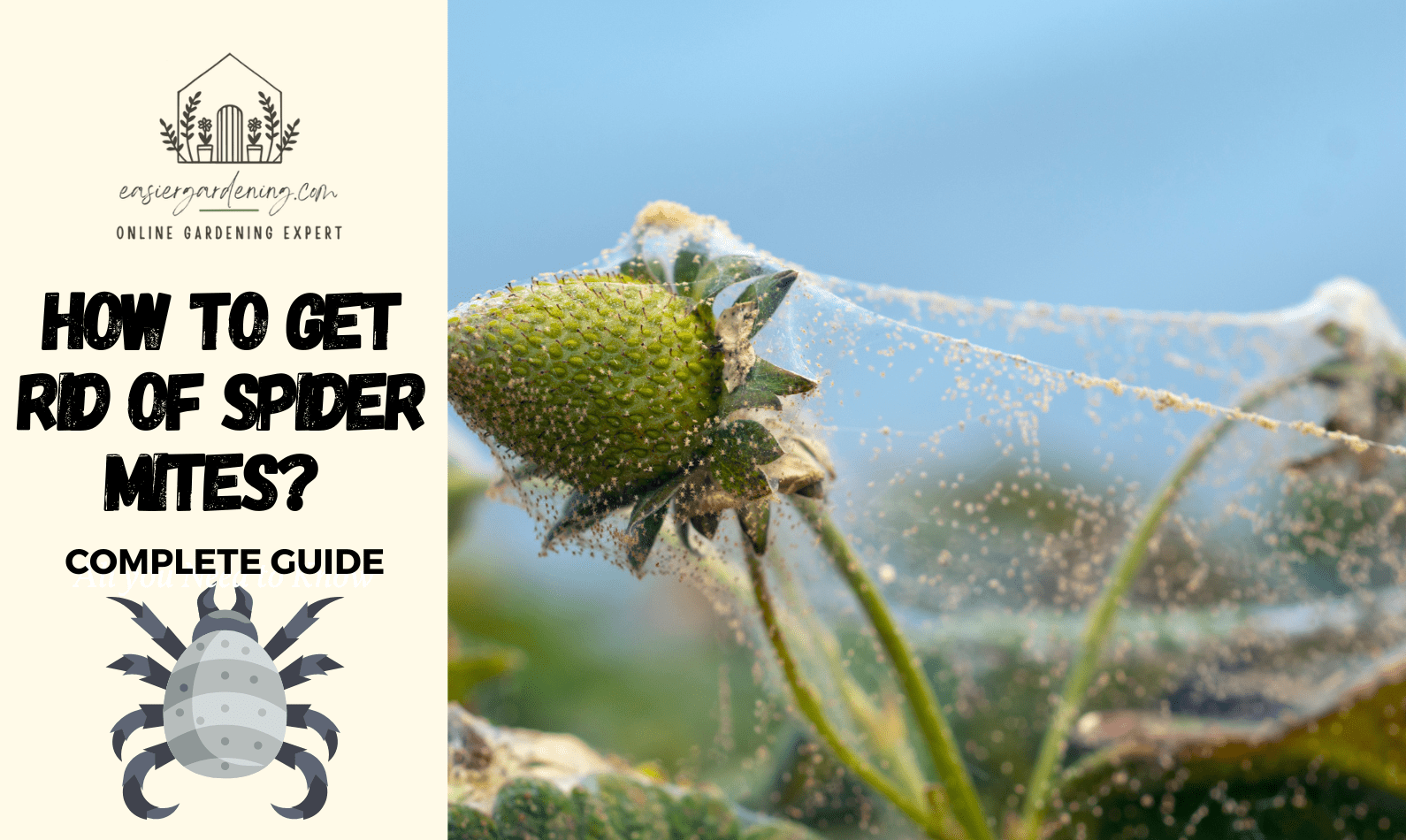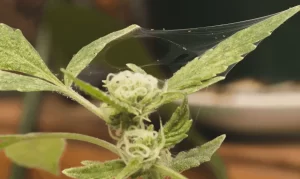How to get rid of Spider Mites: Best Methods to follow: Spider mites are tiny, oval-shaped, eight-legged, silk-producing pests without wings and antennae. They are not classified as insects. Rather, they are from arachnid families and similar to ticks and spiders. They’re so tiny that you may need a magnifying glass to see them clearly.
Spider mites have varieties in colour (red, green, black, white) and species. Two-spotted spider mites, European red mite, spruce spider mite, Maple mite, southern mite, are the most common and destructive species. However, though spider mites cannot be seen with naked eyes, they are very harmful to our plants, both outdoors and indoors.
As spider mites are prevalent pests around us, it is essential for all to know about them in detail. Read the whole article, get explicit ideas, and catch the best methods on how to get rid of spider mites in your garden and home.
Contents
- Life cycle: How do spider mites grow?
- Symptoms of spider mites’ infestation
- Damages: Are Spider mites harmful?
- Spider mites Treatment: How to Get Rid of Spider Mites?
- Use of Biological method
- Use of Chemical pesticides
- Use of organic remedies
- Preventive Measures against Spider Mites
- Final Thought: How to get rid of spider mites?
Life cycle: How do spider mites grow?
Spider mites are very prolific in nature. They get sexual maturity as little as 5 days, hatch within 3 days, and complete their lifecycle within 2-4 weeks. They undergo five stages of life –
- Egg: Adult mites thrive during summer. Under optimal conditions, one female adult can lay 100-300 eggs (depending on species) within her 3-4 weeks’ lifetime. They usually lay eggs on the underside of leaves.
- Larva stage: From the hatched eggs, eight-legged, translucent larvae expose. They start feeding plant fluids and grow fast. Then comes the nymphal phase: this phase undergoes two consecutive stages; Protonymph and Deutonymph.
- Protonymph: In this stage, the larvae form eight legs, consume enough plant fluids, and stay inactive.
- Deutonymph: After a moulting process, they transform into a deutonymph. This is another resting period.
- Adult stage: The deutonymph moults further, changes in colour and shape, and becomes adult in a short time. Adults mature within five days and start to lay eggs. Unfertilized eggs produce males, and fertilized eggs produce female spider mites.
Symptoms of spider mites’ infestation
The natural habitat of spider mites is outdoor plant leaves and indoor deciduous plants. You might be thinking of the symptoms of spider mite’s infestation or how to identify spider mites’ attacks. There are some symptoms from which you might be able to confirm if these creepy mites have attacked your plants.
- At first, you’ll notice some silver dots and perforations in leaves.
- There will be thin silky webs underneath the leaves or the corner of stems.
- White or yellow specks will appear on leaves.
- The colour of leaves will turn completely yellow or brown, shrink, and may fall off due to severe damage.
- If you take a white paper under the infested area and tap on or shake that area, some tiny, black, or red spots will fall on the paper, and you’ll notice them moving.
Damages: Are Spider mites harmful?
Spider mites are considered pestilential vermins. They do not cause harm to humans but indirectly harm by causing damages to plants, trees, flowers, and crops. A dry environment and plants with higher nutrients are favourable habitats for spider mites. The web thin silk underneath the leaves or near the stems of plants and suck saps and nutrients from the plant tissues, resulting in severe water loss and troublesome respiration in plants.
They pierce leaf cell membranes, causing yellow to brown spots on the leaves. Gradually, the plant starts to become pale and perished. Indoor deciduous plants are also not safe from their attack. They thrive from one plant to another using web, regenerating there, thus infecting new plants.
Spider mites Treatment: How to Get Rid of Spider Mites?
Once you identify these tiny creatures’ symptoms, “how to get rid of spider mites” is your primary concern. It is cumbersome to control spider mites if there is an explosion of their growth! You have to work trickily and consistently until the colonies run completely off of the plants. Here are some best methods to follow against spider mites :
Use of Biological method
This method offers a biological approach to kill spider mites. What you have to do is use ladybugs (Coccinellidae), predatory mites, green lacewings, permillis, californius, or thrips to eat up the spider mites from your plants. These are the common spider mite predators. Many garden owners buy and use such bugs in their garden to cease mites effect.
Another step is, to apply vigorous water spray under the leaves to knock off the mites. Wash your plants regularly using a spray bottle. But do not use chemical pesticides in case, for it will kill the beneficial insects.
Use of Chemical pesticides
Since not all pesticides are applicable, there are some insecticidal soaps that won’t harm other good insects other than mites. These soaps are not allowed for outdoor plants, as they cause burn to the leaves at high temperatures. There are also many miticides that experts recommend to use for professionals only, with licenses. You might use dishwashing soaps diluted with water, or pyrethrum, cinnamate (derived from cinnamon), and spray over leaves. Moreover, you can use rubbing alcohol with cotton and wipe across the infested areas, followed by rinsing with spray water.
Use of organic remedies
Among the natural cures, Essential oils (neem oil, canola oil, cottonseed oil, rosemary oil), Hot pepper extracts, herbal tea are the best option to subdue spider mites. Buy pepper repellents from online or shops and use them once a week.
Another option is to make herbal tea with cinnamon powder, cloves, garlic, and seasonings in a ¼th cup of water and boil them. When cooled, use a few drops of dish soap, pour them into a spray bottle, and use to get a satisfactory result.
Preventive Measures against Spider Mites
- Shower your plants regularly with water to clean off dust and pest colonies.
- Keep your plants well-watered to ensure they stay well-nourished and do not succumb to mite infestation.
- If an infestation is noticed on any plant, or leaf, immediately remove that from the other plants to prevent transmission.
- Keep your indoor plants Off from specks of dust and open windows, as spider mites come from outside.
- Keep the environment humid, as mites prefer to live in dry conditions. Use clamp clothes to wipe your plants on a regular basis.
Read more about Effective Ways to Get Rid of Spider Mites During Flowering
Final Thought: How to get rid of spider mites?
From the overall discussion above, we hope you get a clear general concept on how to get rid of spider mites and how to prevent spider mites. Now, it’s time to defend your plants from getting infected by these dangerous tiny creatures.




